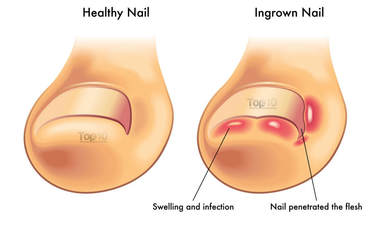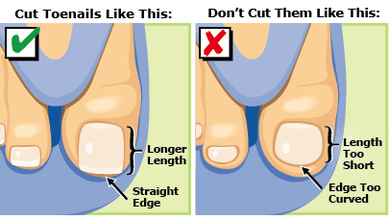What Are Ingrown Toenails
- Most common nail impairment.
- Nail corners/sides of the nails abnormally curve and dig into the soft tissue of the nail grooves causing pain.
- Although the smaller toes can be affected, more commonly seen in the big toenail.
Causes
- Tight-fitting shoes or socks that put pressure on the toes
- Improper trimming of toenails (cutting them too short or rounding the edges)
- Injury to the toenail or toe
- Certain foot shapes, such as curled toes or high arches
- Fungal nail infections
- Genetics
- Recurring trauma to the feet from activities
Symptoms
- Pain and tenderness around the affected nail
- Swelling, redness, and warmth in the surrounding skin
- Buildup of fluid or pus in the area
- Overgrowth of skin around the nail
When To Visit A Foot Specialist
- If any of the following symptoms above are present and no improvements are noted with home treatments.
- Individuals with poor circulation, diabetes, etc., seek immediate treatment as soon as symptoms become present.
What Can I Expect During The Visit
- Physical examination of the lower limbs.
- Non-surgical or surgical removal of the ingrown portion of the nail (depending on severity).
- Permanent correction of the ingrown portion of the nail to prevent recurrence.
- Prescription of topical / oral medications to treat infection.
Prevention
- Trim nails straight across making sure nails are not longer than the toe tip.
- Do not round or dig into the corners with a nail file or any other device.
- Wear shoes that have wide and deep toe boxes to accommodate your foot properly.
- Never rip or tear nail edges.


